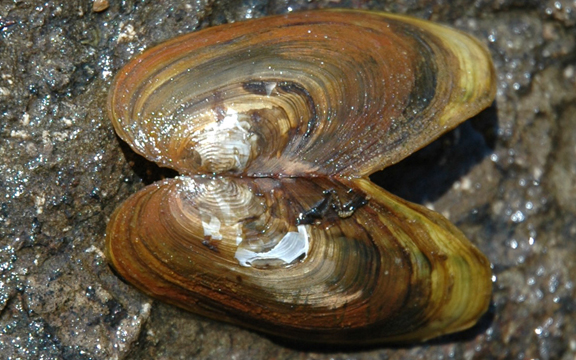
![]()

Photo 1: Western Floater shell found in the Lower Campbell Lake
Western Floater: Anodonta kennerlyi
This freshwater mussel is common on Vancouver Island. It prefers the fringes of lakes and lives at depths of between 1-3 meters. In waters with very modest currents, sedintary freshwater mussels face problems of dispersion that their marine cousins don't. Western Floaters, like many other freshwater mussels, have overcome this problem by developing an important relationship with fish species around them. The glochidia (a larval stage of the mussel) hitch a ride on the backs of fish.
Western Floaters are generalists, willing to latch onto whatever fish is available, but research has shown that they seem to do well in areas with high densities of Prickly Sculpins. Prickly Sculpins are particularly important because they are benthic dwellers, sharing the lake bottoms with the sedentary mussels, and thus are more likely to come into contact with the glochidia, which are themselves poor swimmers. Sticklebacks are another important species for the is dispersion of Western Floaters.
Though, apparently healthy populations exist on Vancouver Island, freshwater mussels as a whole are one of the most endangered groups of animals across North America. The most common causes of endangerment are thought to be environmental pollution, loss of host fishes needed for propagation, and loss of habitat due to land use.
Freshwaters mussels play an important role in filtering the sediment and keeping the water clean.
